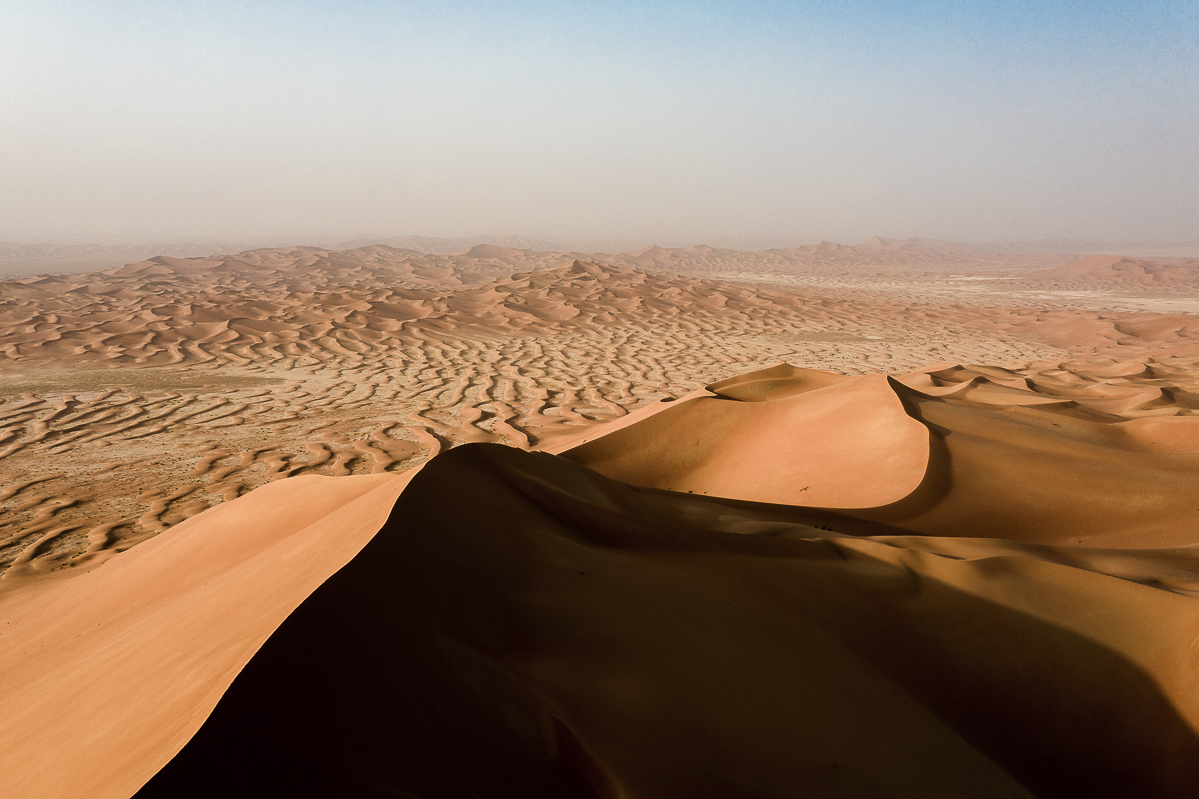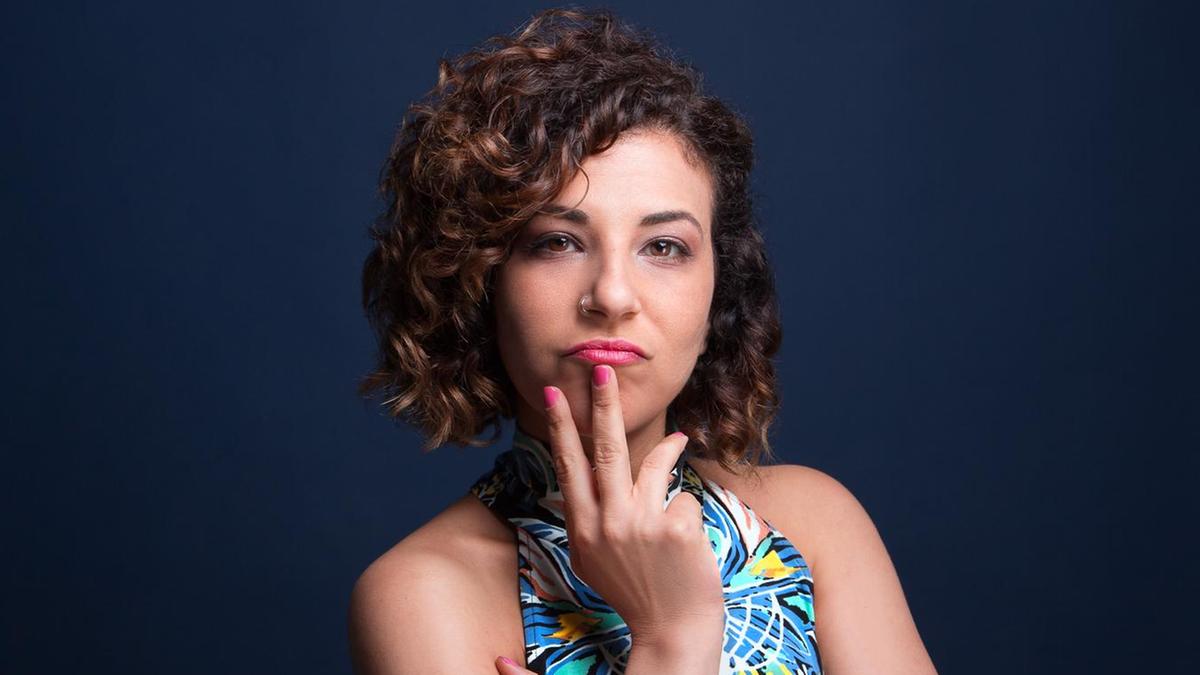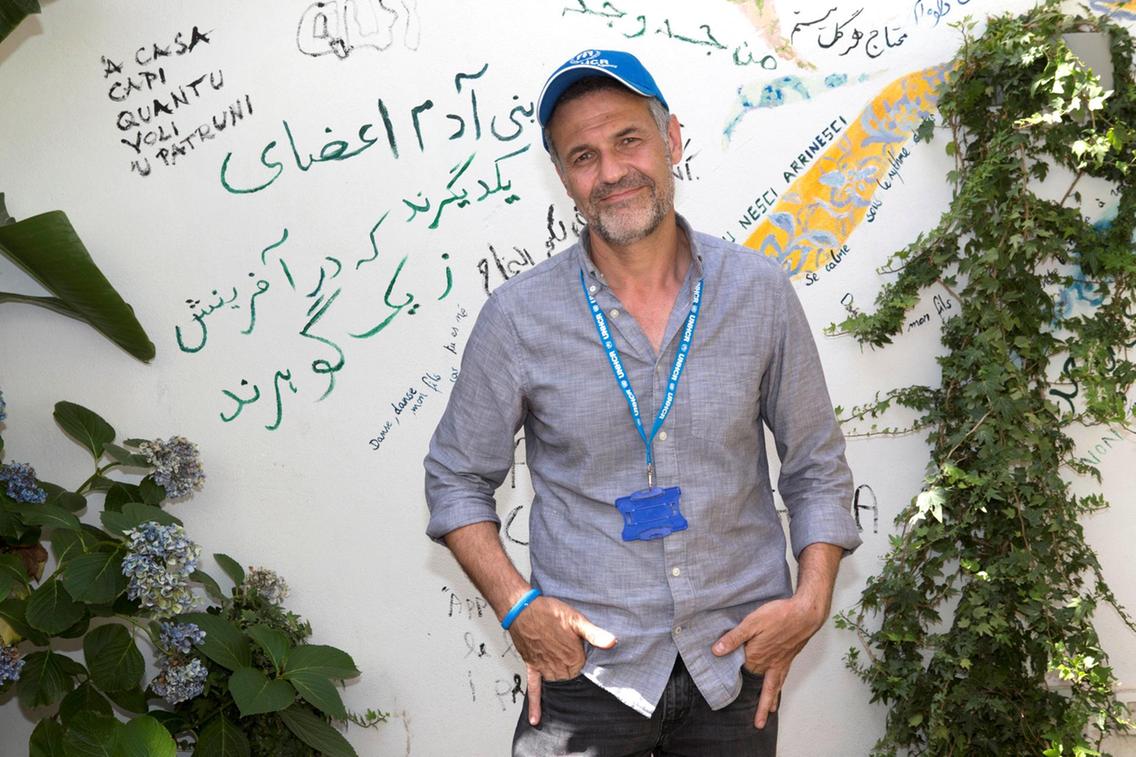Photographer Obaid AlBudoor embarked on a three-year project to document Sharjah’s landscapes, natural and urban. It is here, he says, that he fell in love with photography. Hadara, September 2020
Obaid AlBudoor can remember the exact moment he began to fall in love with photography. On his days off from being an investment banker, he would go off-roading with his friends in Sharjah’s wide open spaces. “Those massive, beautiful dunes,” he remembers. “You know, I think I needed to go into nature to figure things out. And it was there I realised that I not only wanted to see a lot more sunsets and sunrises in my life, but somehow encapsulate that moment of clarity and feeling in a photograph.
“For me, the art of photography isn’t just capturing the image you want to take, but showing people how you feel at a particular moment, too. I want people to see the soul in my pictures.”
So in 2017, AlBudoor ditched his job and continued with what became a three-year project to document Sharjah through photography—even though he’s from Dubai. Dunes and camels are spectacularly present, but there are mangroves and mosques, shorelines and street scenes—26 of which were displayed at the Xposure International Photography Festival in Sharjah in September last year.
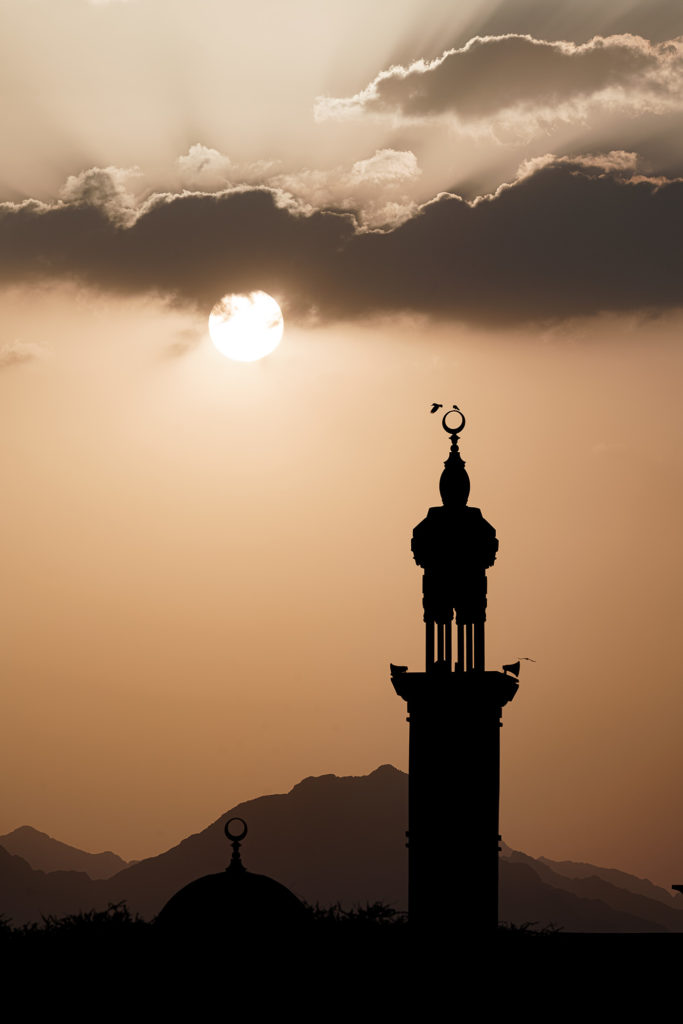
“Through these images I hope the viewer goes on the same journey of discovery I did,” says AlBudoor, 28. “Exploring it bit by bit, I really fell in love with Sharjah’s authenticity. There’s a certain soul and spirit, a real community and plenty of subcultures. I was enthralled by that and wanted to explore it a bit more. The city is massive; there are a lot of alleyways, nooks and crannies, but then of course there’s the amazing desert, the wadis, the shoreline from east to west. I wanted to show people as much as I could about Sharjah’s diversity. It came out pretty well, I think.”
Pretty well is an understatement. AlBudoor’s work has caught the eye of clients such as Apple and National Geographic. A common theme in his collection are the tiny details in what otherwise could be straightforward landscape photography. Look closely at his image of the Mleiha mountain and dunes—there’s a power line running through the middle of it. On the right, a small group of people have gathered in their cars to witness the sunset, minuscule yet not insignificant to the story AlBudoor wanted to tell. Dune buggies scale the sheer dune, their tracks like scars in the sand.
“These subtle interventions into the natural world are really interesting for me,” he says. “Honestly, initially I was trying to crop out the power line, but actually this says a lot about what it’s like to be living out there; people still need power. One day maybe we’ll all have solar so we won’t need these lines, but for now they’re here and written into the history of this place.”
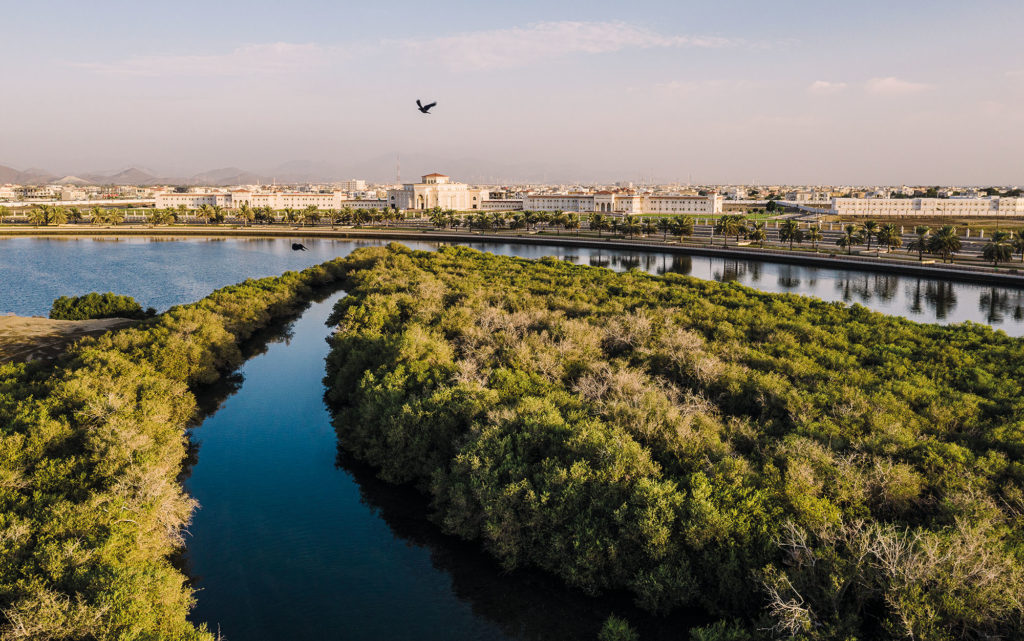
In another juxtaposition of the natural and manmade, in his shot of Kalba over its mangroves, it’s not the opulent University of Sharjah building or the distant city that captures the eye, but a bird soaring through the sky. The sunset shot of a Khorfakkan mosque in silhouette is made even more emotive by another bird swooping around its minaret.
“I do feel a close connection with birds—I always find they add an extra 10% to an image,” he says. “They add depth, dynamism, movement…of course every time you have to be completely lucky for them to fly into shot at the right time, but when it does happen it’s one of those ‘wow’ moments.”
It isn’t all luck. AlBudoor undertakes plenty of preparation for his shoots. He has what he calls “a kind of camping set-up” in his car, and when the mood takes him, he jumps in with his cameras, goes out for a few nights and waits for the right shot to come together. “I don’t just take a photograph and leave,” he says. “I usually spend a whole day in a place so I can understand its essence. I try to see sunrise and sunset so I can see the different combinations. It’s not like a studio where you have absolute control; you have to have a positive, patient mentality, so I’m fine if the clouds roll in.”
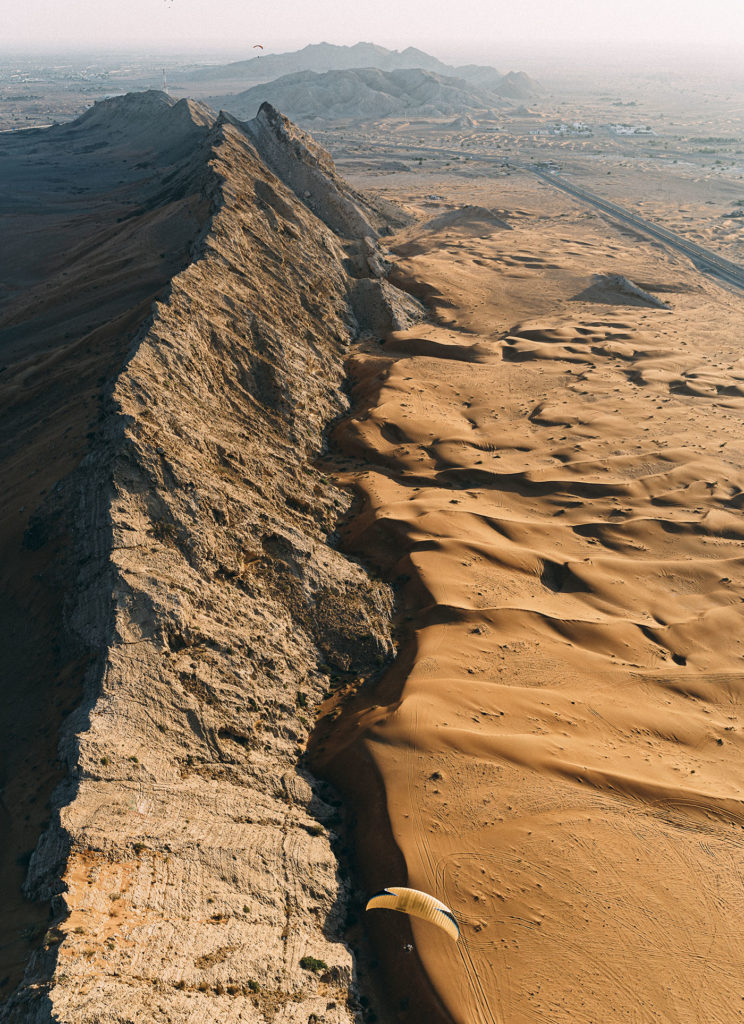
AlBudoor uses drones even though he’s aware that they are controversial in photography. “It’s one thing to hike to the top of a mountain and shoot, another to send a drone up. But I do love it because it’s given me a certain perspective and the ability to take different shots,” he says.
But a drone can never compare with being “up there yourself”—so AlBudoor went over Mleiha on a paraglider.
“A friend of a friend took me up, and it was such an act of kindness. He was constantly asking me what shots I wanted to get and would help get me into position,” AlBudoor says. “These are photographs I would never have been able to take myself so it was really a collaborative experience to create the best image possible. They are once-in-a-lifetime shots, and I’m so happy with them.”
At the same time, AlBudoor often documents sides of Sharjah that are completely accessible but not always seen or appreciated. His favourite mosque in all of the UAE isn’t one of the grand, famous buildings, but a very small, humble structure near the Sharjah Art Museum, Aldelail Mosque. In order to celebrate this special place while respecting the privacy of the people praying, AlBudoor was careful not to show faces or be obtrusive.
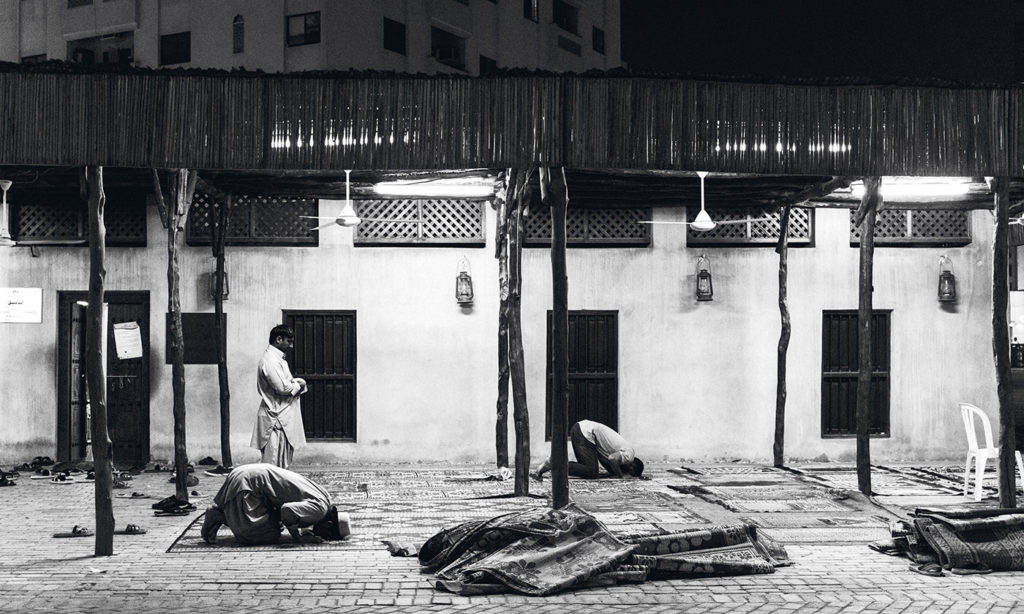
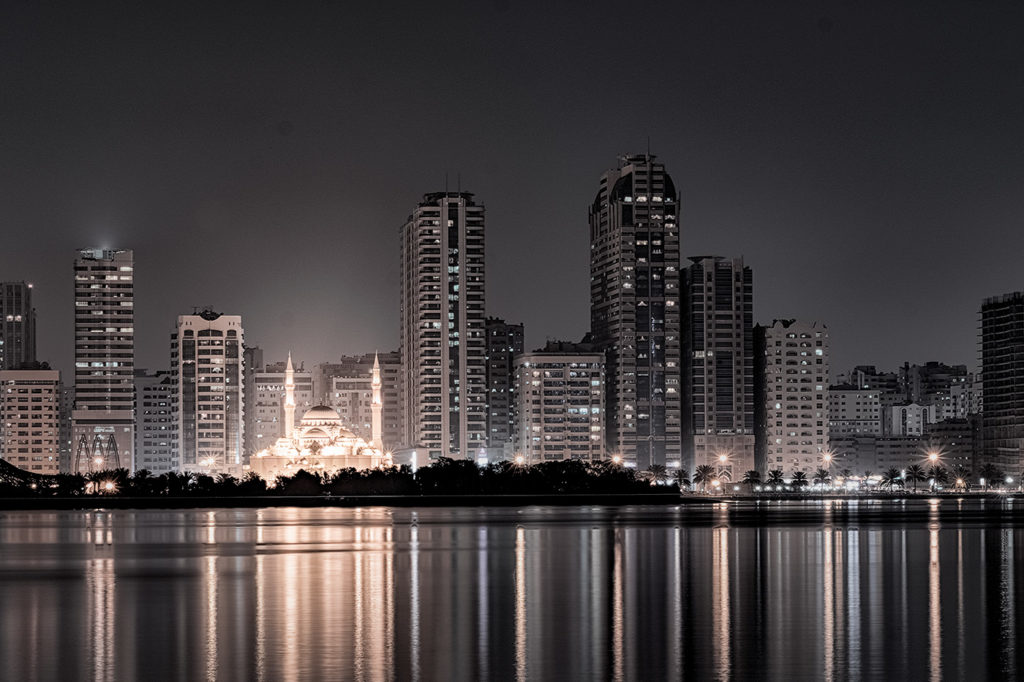
“There are still wooden trunks that hold up the roof, the ceiling is partially made of palm leaves, or areesh. It really has a certain essence and ambience that I haven’t found anywhere else in the UAE. There isn’t the complicated protocol of other mosques,” he says. “The prayer mats are all different colours; it has a lovely atmosphere to it. And yet it’s hidden away between two buildings.”
Although his participation in the Xposure International Photography Festival might have felt like a natural endpoint, AlBudoor says he’s still a distance away from understanding Sharjah the way he would like. At the show, he was excited to find so many people telling him they had no idea many of his landscape images were taken in Sharjah.
“You know, I had one of my followers on Instagram saying that every time I post a picture it gives him a sense of healing, and that made me feel very privileged,” he says. “I still want to get beneath the emirate; it’s about continuing to show people that it’s not an impossible idea to go to these places,” he says.
And that means if anyone sees an AlBudoor photograph and is motivated to check out these incredible vistas for themselves, he will feel that he has succeeded. “Absolutely,” he smiles. “Less screen time, more sunsets.”
